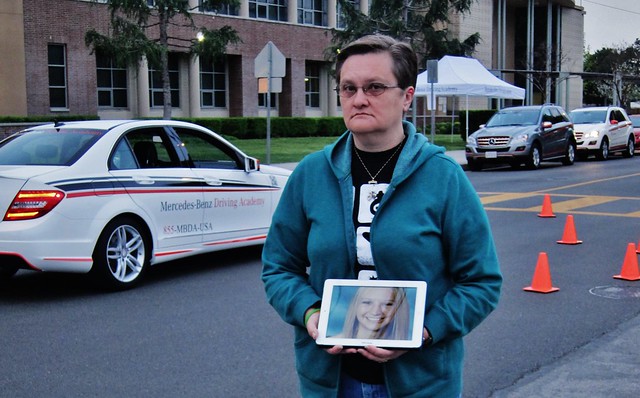
University of Chicago economist Casey Mulligan, over at the New York Times' Economix blog, dug up a 2012 study by Cheng Cheng of Texas A&M University that tells the world nothing new about the currently confused state of laws against distracted driving, and in particular bans on handheld phone use. "Perhaps lawmakers overestimated the benefits of regulating this sort of driver behavior," Mulligan writes. Or perhaps lawmakers didn't pass laws that effectively protect vulnerable road users from dangerous, distracted drivers.
What Mulligan doesn't mention is that distracted driving hardly stopped when today's loophole-ridden and inconsistently enforced laws banned only the most obvious forms of distracted driving. Nor does Cheng's paper make a convincing case that the newer, broader bans on texting while driving won't save lives.
Cheng's study, covering 2004-2010, even references earlier studies from the likes of the Insurance Institute for Highway Safety that show that today's laws, which largely allow drivers to use phones via hands-free devices, have no basis in fact and would not be expected to save lives. As a 2009 meta-study cited by the National Safety Council put it: "Current research does not support the decision to allow hands-free phone use while driving." Whether a driver controls the phone using her or his hands, through a headset, or through the car stereo, makes no difference: any driver using a phone is a distracted driver.
So why do state hand-held bans not work? Inconsistent policies, inadequate enforcement, and a purely symbolic focus on one small class of distractions (the hand-held phone) have hobbled most state bans from the very start. Lobbyists for powerful industries, like mobile phone carriers, consumer electronics makers, and now automakers keen on selling cars with built-in voice controls, focused initial bans on handheld phones while leaving loopholes for profitable add-on devices like Bluetooth hands-free sets. Enforcement officials have similarly fixated upon this easily-spotted group. A patchwork of state laws, with a majority of states only recently banning text messaging for all drivers, and the perception of scant enforcement leave most American drivers confused, or indifferent, about the bans.
In his paper, Cheng notes that how Americans use phones while driving may have shifted in reaction to the various bans. Perversely, drivers may have tried to evade handheld phone bans by resorting to text messages instead -- perhaps part of a broad, and simultaneous, nationwide shift away from talking and toward texting. Although Cheng found no evidence that texting bans reduced crashes or casualties, he examines just one year of data on that subject, hardly enough to draw firm conclusions.
High-tech voice-control gizmos built into cars are less a solution than a "looming public safety crisis" unto themselves, according to AAA president and CEO Robert L. Darbelnet -- citing fundamental research into cognition showing that the human brain is simply incapable of driving and communicating simultaneously.
What will it take to disarm the menace of drivers distracted by their phones? Safety advocates, like the National Transportation Safety Board and the NSC, say that nothing short of a total ban on device use by drivers will stop the dangers of distracted drivers (and not just of cars: phone use by professional operators has also been implicated in bus, train, and boat crashes). Others, like the American Association of Orthopaedic Surgeons, make an analogy to drunk driving laws. Two forces -- an effective national awareness campaign that stigmatized drunk driving, and national legislation that codified a uniform, quantitative metric of intoxication -- combined to sharply reduce the number of drunk driving crashes.
In the meantime, if you need to be connected to the Internet all day, every day, you're in luck. You could use a low-tech, voice-activated gizmo, and find a carpool buddy to delegate your device to: NHTSA's observational survey of electronic device use suggests that many drivers with adult passengers do this. Otherwise, many cities across America employ fleets of chauffeurs for busy, on-the-go people like you.





